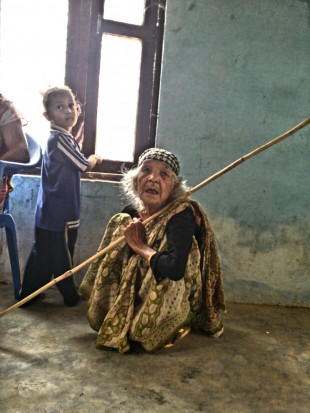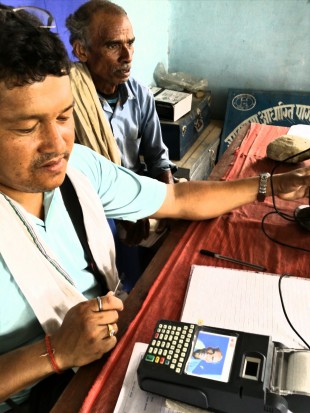I first met Pabitra Damai at the village development office in Banke, West Nepal, where she had walked for 4 hours to open a bank account so that she could withdraw her monthly social security allowance of Rs. 500 ($ 5). Pabitra Damai, a 78-year-old widow, did not remember when her husband had died. Only that it was a ‘long long time ago’. When I asked her if she had a bank account, she laughed. "What would I do with a bank account?"

Following the commencement of the peace process in Nepal, financial institutions have been engaged in opening branches in urban, semi urban and rural areas, including reopening branches that were closed during the insurgency. However, although there are 1,300 branches of commercial banks, they remain highly concentrated in the urban areas, particularly the capital city.
Meanwhile, 70% of the population still have no access to formal financial services. The current market trends in remote Nepal where there are very few bank branches indicate a dependence on cash, along with a large unbanked population, and a push for financial inclusion.
There are a number of reasons why private financial institutions have been unable to provide appropriate financial services to communities living in rural and remote locations. Amongst these, high transaction costs, dispersed clients, limited ability to monitor loan utilisation and low awareness of financial discipline are the major constraints.
Although the most likely source for linkages between financial institutions and local communities are institutions such as Savings and Credit Cooperatives (SACCOs), agriculture cooperatives, Community Forest Users Group (CFUGs) and various other groups (such as farmers’ and producers’ group, producer’s group), these local institutions have limited knowledge and skills to effectively link with financial institutions and manage their finances effectively and sustainably. Therefore, most of remote Nepal still relies on physical delivery of cash to conduct financial transactions.
DFID Nepal’s Sustainable Access to Finance and Livelihood Programme has partnered with regulated financial institutions and the private sector to expand financial services to reach the unbanked population. This includes adopting branchless banking methods with a broad range of financial services – such as agent banking, card-reading point-of-sale terminals, and mobile phones to access financial services and execute financial transactions.

The approach identifies, trains and appoints rural agents to expand the use of branchless banking for first time customers. Methods such as financial literacy classes are introduced to clients and microfinance institutions to facilitate easier access to information on loans/accounts, payment-disbursement of loans and facilitate deposits and withdrawals through local rural agents. This is based on best global practices, where technology has been successfully introduced for expanding inclusive financial services in similar contexts in Kenya, Uganda, Haiti and Indonesia.
Digitisation of services will require time to allow for regulations and a deepening in understanding of market demand to create platforms, products, and services that respond to the Nepalese context. However, branchless banking is one of the real opportunities to transform the way Nepalese handle cash, conduct their daily operations, and interact with institutions and one another.
As I gathered my bags to leave after spending the day observing over 600 people conduct financial transactions with an agent for the first time in their lives, I ran into Pabitra Damai and her grandson at the door. As she proudly displayed her pass book that contained her bank account number for the camera, she confirmed - almost apologetically, that she had to withdraw all of her money. ‘I need to buy medicines’ – she clarified. When I explained that I would be writing about her, she requested that I publish her picture alongside the article. When I gently reminded her that she couldn’t read, she responded – ‘but I can see. And I can show it to my grandchildren, and my neighbors’. And then she laughed.
Keep in touch. Sign up for email updates from this blog, or follow DFID Nepal on Twitter.

1 comment
Comment by Yogendra Timilsina posted on
It is true that the branchless banking is cost-effective for banks, but the risk associated with this is relatively higher at least for the rural poor people who are illiterate and they are ignorant with the use of modern urban techniques. Even then we can enhance their access to financial services gradually by providing them financial literacy trainings.